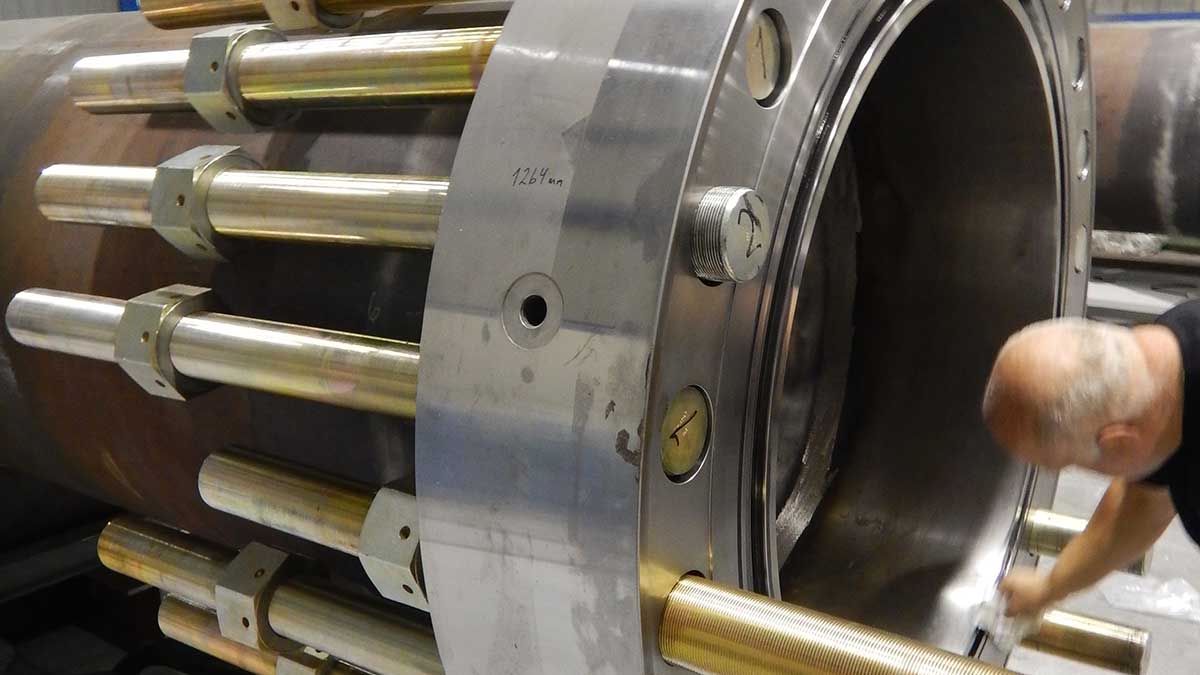Creative Solutions
Marjan Offshore Gas Project deploys compact flanges

Global August 09, 2021
Smaller, lighter pipeline connectors provide big benefits in subsea environment.
For small diameter pipelines, conventional American National Standards Institute (ANSI)/ American Society of Mechanical Engineers (ASME) flanges are the most suitable option considering standard design, widespread manufacturing, and availability, which ultimately provides a cost-effective solution.
About Flanges
Flanges are an integral part of piping systems and widely used as a method of connecting pipes, valves, pumps, and other equipment. Similarly, flanges are used to connect subsea pipelines to the piping installed on the platform’s topside. The flanges also provide flexibility during installation, with several other benefits associated with cleaning, inspection, removal, and modifications.
Consequently, as the pipeline size increases, use of conventional ANSI/ASME flanges creates many challenges due to the significant increase in size and weight, which eventually takes away all the above benefits, and many times restricts the selection of handling and installation. It may even restrict the installation method and barge selection. Moreover, it becomes more cumbersome or unmanageable in offshore operations during leaks, modification, and removal.
Overcoming the challenge
The Marjan Offshore Gas Project has a number of large diameter (> 24”) pipelines. The use of conventional ANSI flanges at tie-ins may pose additional risk of obstruction while passing through the stinger and roller on the installation vessels. Furthermore, the choice of installation vessels is limited, which adversely impacts installation schedule and costs. Considering this, the Marjan Project Team has innovatively opted to use compact flanges instead of the conventional ANSI flanges at pipeline spool tie-ins.
Technology description
Compact flanges, as the name suggests, perform the same function as conventional flanges but are smaller, lighter, and tighter in comparison with conventional flanges. Compact flanges are typically 70% to 80% lighter than conventional flanges and have smaller dimensions, both in overall length and diameter. This makes them suitable for applications where weight and space are a constraint.
In topside decks, compact flanges have been used for large diameter pipes to mitigate the space constraints and provide a prominent solution in congested routing locations.
Additional advantages
The compact flange provides a static connection, which means there is no relative movement between the mating flanges when in service. Due to the static nature of the connection, there are less chances of leaks and a reduced need for maintenance. Compact flanges also have double independent seals, which make them safer.
For the Marjan Offshore Gas Project, the advantage of using compact flanges is the flexibility in choice of vessel, ease of handling, and installation. The adoption of compact flanges has turned a potentially challenging operation into an opportunity for new technology adoption with benefits to all stakeholders.
Badr M. Burshaid, manager of the Marjan and Zuluf Increment Projects Department, said, “In the Marjan and Zuluf Increment Programs, we explore creative ways in improving constructability through technology deployment.
Every success we accomplish pushes us further toward increased technology scouting and challenges the status quo of offshore fabrication. The introduction of compact flanges to the project is indeed one of these success stories in technology deployment.
— Badr M. Burshaid
By Ayedh F. Al-Gahtani and Mustafa H. Al-Ramadhan



